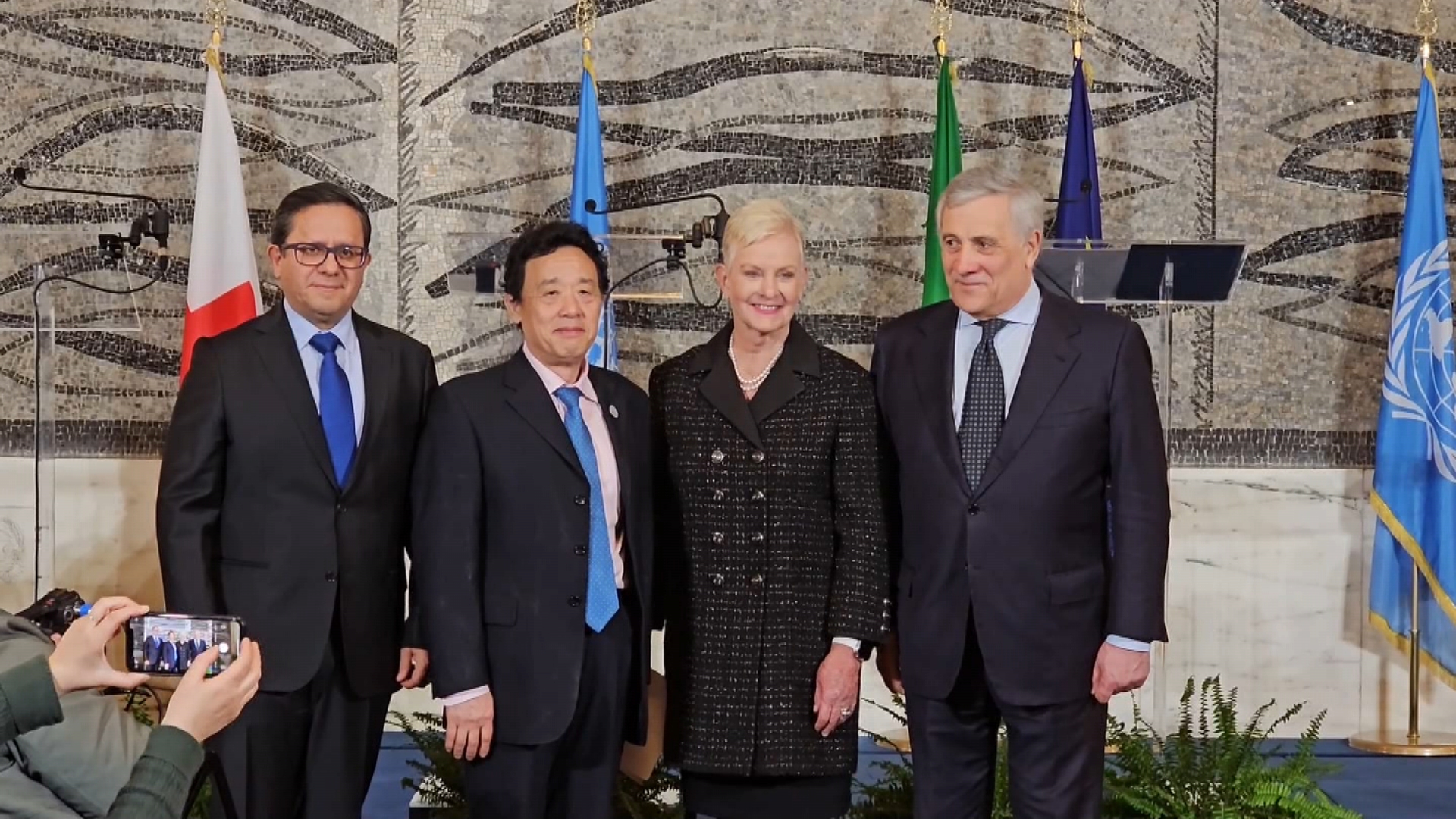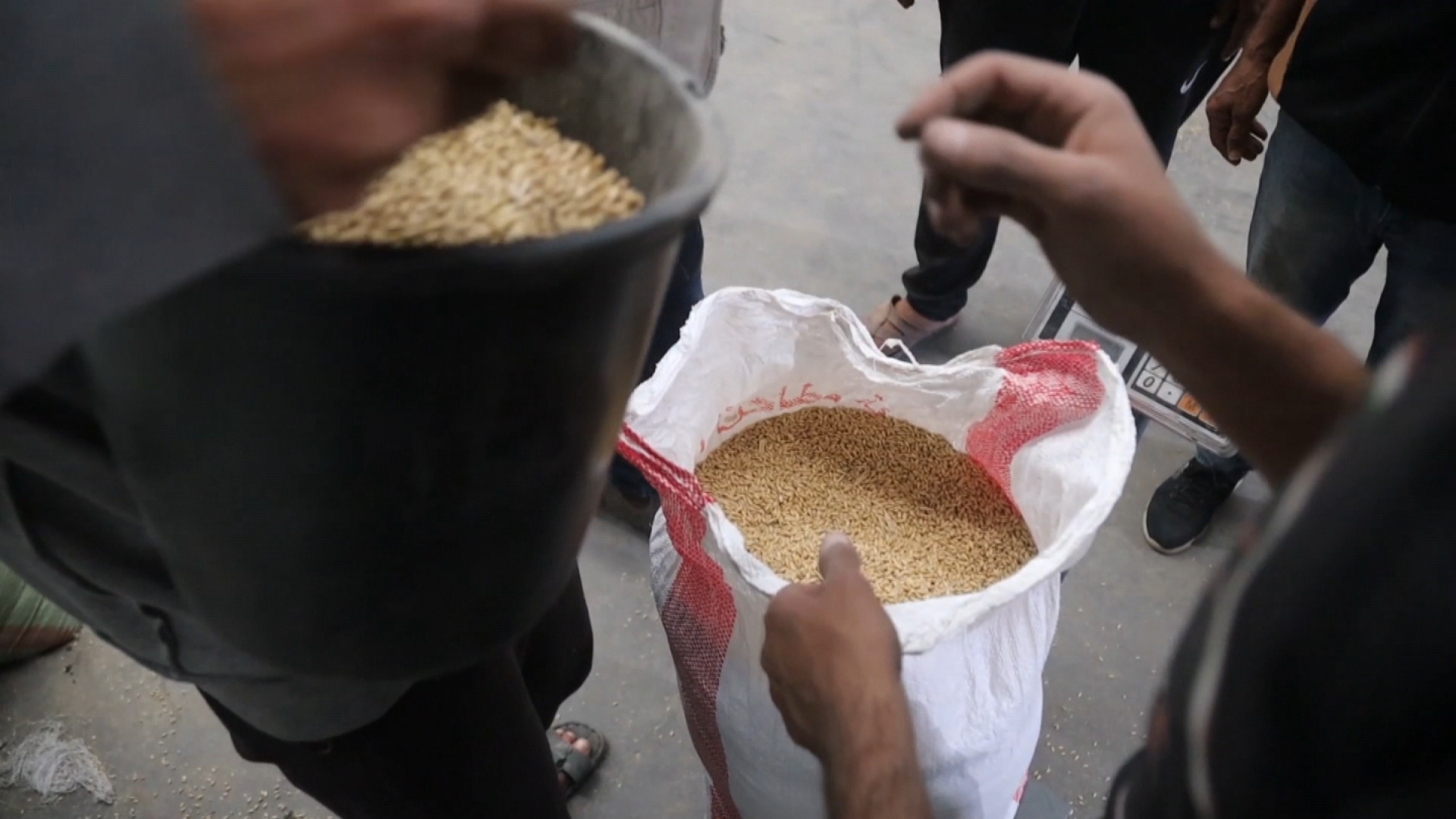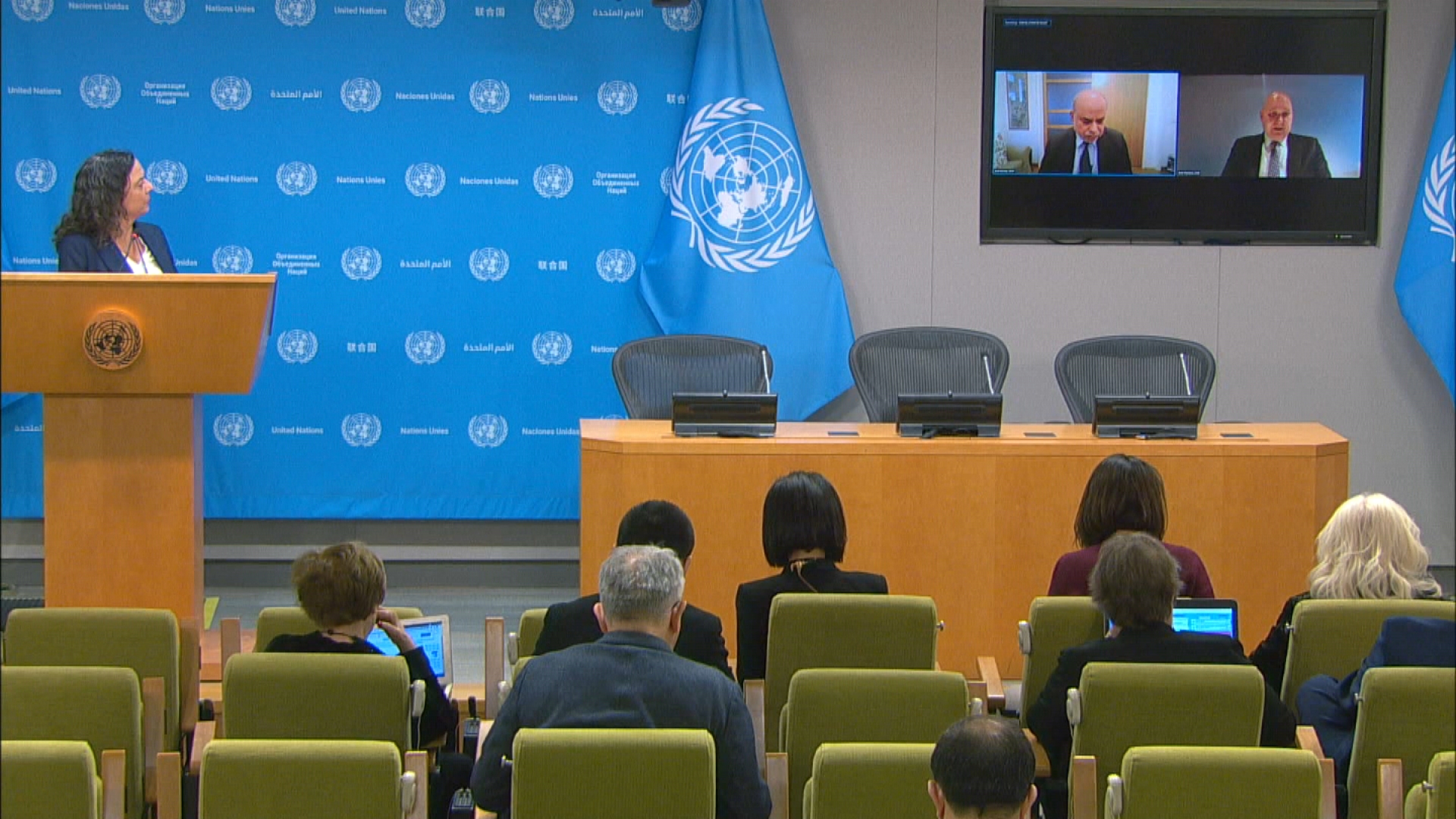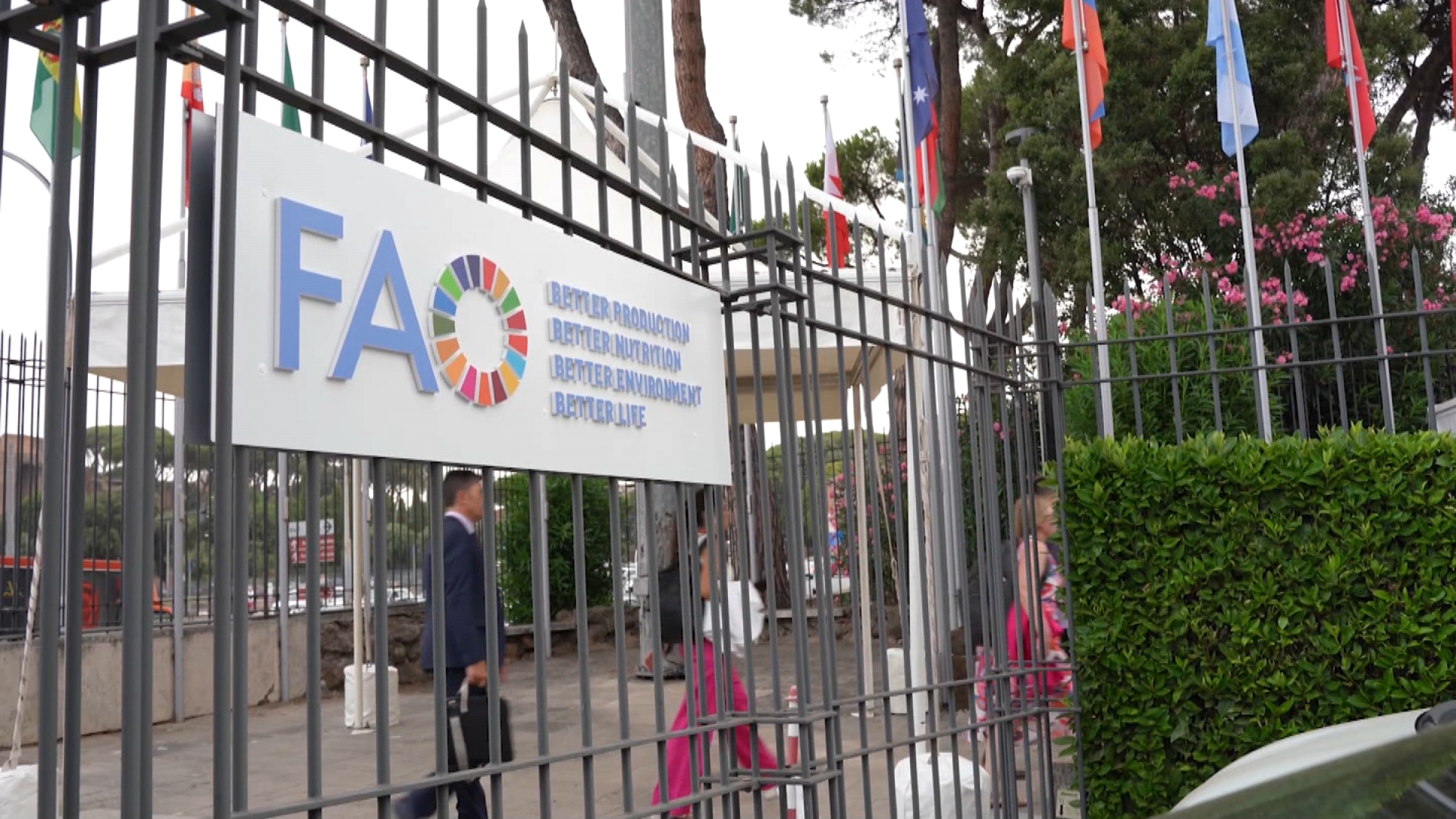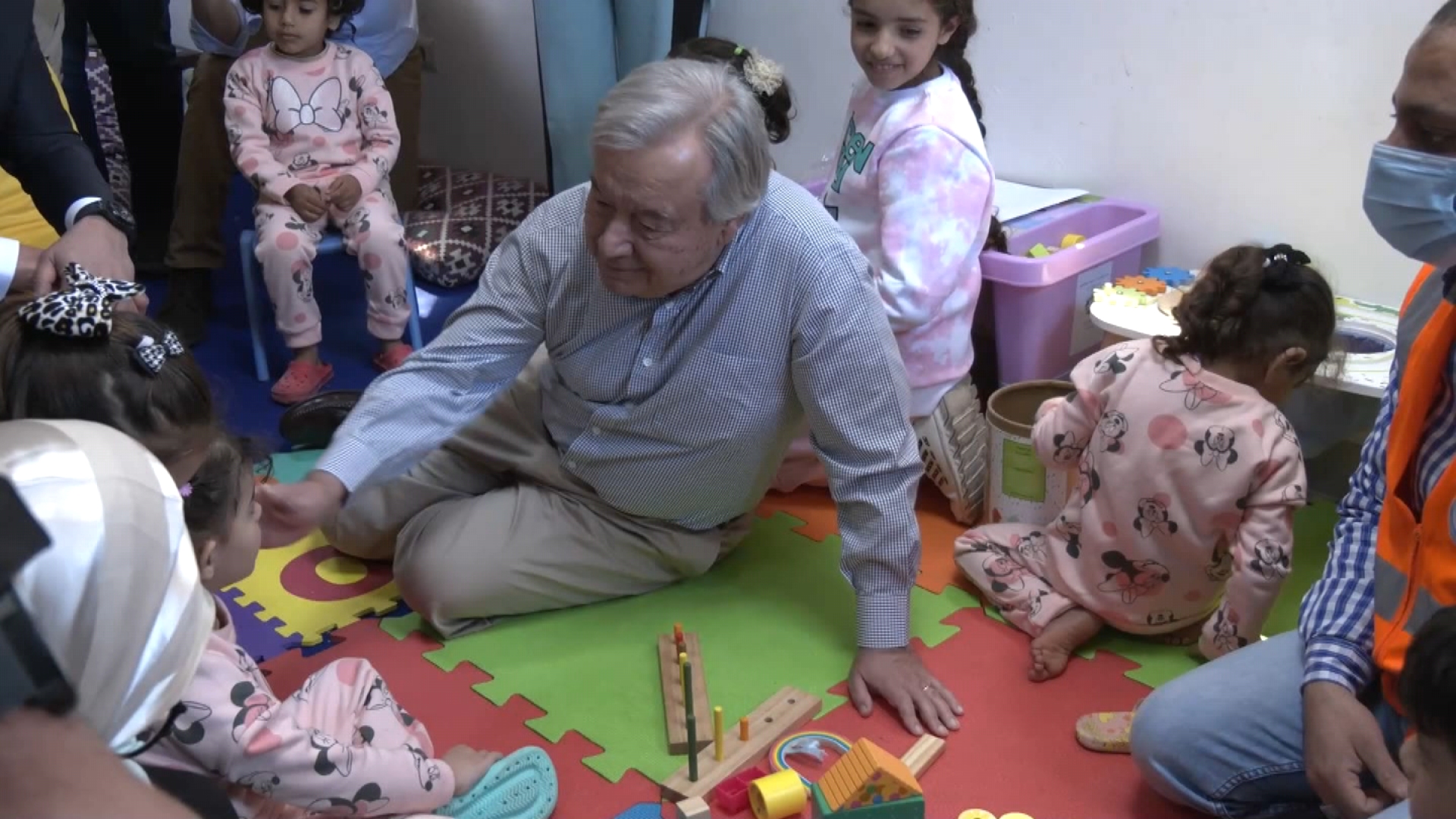FAO / GAZA ANIMAL FODDER DISTRIBUTION
STORY: FAO / GAZA ANIMAL FODDER DISTRIBUTION
TRT: 3:41
SOURCE: FAO
RESTRICTIONS: PLEASE CREDIT FAO ON SCREEN
LANGUAGE: ENGLISH / NATS
DATELINE: 4 APRIL 2024, GAZA / 4 APRIL 2024 ROME, ITALY
SHOTLIST:
4 APRIL 2024, GAZA
1. Wide shot, fodder being downloaded from trucks in a warehouse
2. Med shot, forklift taking fodder from a truck
3. Wide shot, forklift carrying fodder
FILE - ROME, ITALY
4. Wide shot, FAO Headquarters
5. Med shot, FAO logo
4 APRIL 2024 ROME, ITALY
6. SOUNDBITE (English) Rein Paulsen, the Director of Office of Emergencies and Resilience, the Food and Agriculture Organization of the United Nations (FAO):
“When you look at the analysis that was done through the IPC (Integrated Food Security Phase Classification) that the Famine Review Committee examined as well, the messages were crystal clear. And one of the key messages was that it was urgently important not just for people to be able to access the calories that they needed, but there was really deep concern about the nature of what was being consumed. It's not enough just to eat bread. You need to eat vegetables. You need to have access to proteins. You need to be able to access milk as well. And it's in that context that our emergency animal health interventions and our fodder interventions specifically play such an important role. Those fodder interventions will keep livestock alive sheep, goats, cattle. It will protect those assets for vulnerable households. But actually, the most important impact is what it means in terms of access to milk for vulnerable households and for malnourished children. And the estimates that we have using WHO (World Health Organization) nutrition standards and guidelines is that the 1 500 metric tonnes of fodder that we plan to bring in, that we have funding to procure that is on its way and that we expect is now being distributed, that that can provide milk access to [vulnerable households].”
7. Wide shot, Rein Paulsen working in his office
8. Tilt down, Rein Paulsen taking notes
9. SOUNDBITE (English) Rein Paulsen, the Director of Office of Emergencies and Resilience, the Food and Agriculture Organization of the United Nations (FAO):
"Part of what's going to be at the heart of preventing famine in Gaza is dietary diversity, and it is about access to more, it's not just about the amount of calories that's consumed on a daily basis. And this came clearly through in the analysis. And so, an ability to start producing crops again, an ability to keep livestock and sheep and cattle alive, small ruminants, as we call them. About 55 percent of all of the small ruminants in Gaza have either been slaughtered or killed since the fighting started. That's a huge percentage. It means that there are still about 45 percent of those sheep and goats that are still alive. It's vital that we keep them alive. I talked about the animal fodder as being able to provide enough milk for all of the children under ten in Gaza. That's the most important statistic. It's also important to note that that same amount of animal fodder we estimate could keep alive the balance of the sheep and goat population that that still exists in Gaza. And this is this is vitally important. And when we look slightly longer term, our priority at the moment collectively has to be to prevent famine. As soon as possible being able to restart agricultural activities is going to be indispensable in Gaza as it is in any context. Keeping animals alive in that context is an obvious and important immediate choice."
10. Med shot, FAO flag
The Food and Agriculture Organization of the United Nations (FAO) is delivering 150 tonnes, out of a total of 1,500 tonnes, of animal fodder to 2,450 livestock-keeping households in the Gaza Strip to safeguard surviving animals and support local production of fresh nutritious food like milk, dairy, eggs and meat amidst an imminent risk of famine.
This is the first time much-needed animal fodder has entered the Strip since the escalation of hostilities, which has caused the collapse of agrifood value chains, contributing to rapid deterioration of acute food insecurity in Gaza, with famine conditions emerging in the north of the Gaza strip.
The agriculture sector was already diminished pre-war yet remained vital to the local economy. Prior to 7 October, Gaza’s food producers kept the Strip nearly self-sufficient in eggs, milk, poultry and red meat, fish, vegetables and fruits. These items are indispensable to a healthy, nutritious diet, especially for children, and are impractical to import as food aid.
Around 55 percent of meat and dairy producing livestock in Gaza have been slaughtered, consumed, or lost due to the conflict. Only 45 percent of small ruminants remain, corresponding to approximately 30 000 heads, as of March.
FAO seeks to deliver initially a total of 1 500 tonnes of fodder, which is sufficient to provide for about 50 days milk for all children under 10 years of age in Gaza, providing around 20 percent of the WHO recommended minimum daily requirement in terms of caloric intake.
SOUNDBITE (English) Rein Paulsen, the Director of Office of Emergencies and Resilience, the Food and Agriculture Organization of the United Nations (FAO): “When you look at the analysis that was done through the IPC (Integrated Food Security Phase Classification) that the Famine Review Committee examined as well, the messages were crystal clear. And one of the key messages was that it was urgently important not just for people to be able to access the calories that they needed, but there was really deep concern about the nature of what was being consumed. It's not enough just to eat bread. You need to eat vegetables. You need to have access to proteins. You need to be able to access milk as well. And it's in that context that our emergency animal health interventions and our fodder interventions specifically play such an important role. Those fodder interventions will keep livestock alive sheep, goats, cattle. It will protect those assets for vulnerable households. But actually, the most important impact is what it means in terms of access to milk for vulnerable households and for malnourished children. And the estimates that we have using WHO (World Health Organization) nutrition standards and guidelines is that the 1 500 metric tonnes of fodder that we plan to bring in, that we have funding to procure that is on its way and that we expect is now being distributed, that that can provide milk access to [vulnerable households].”
Food aid is indispensable but not sufficient to meet caloric and nutritional needs in Gaza. Food production imports are mostly banned, with only a few permitted from countries other than Israel. FAO is committed to expand its assistance in collaboration with its partners and donors to deliver crucial agricultural aid to restore availability of highly nutritious food, prevent the sector’s total collapse, preserve remaining livelihoods, and curb acute hunger and malnutrition.
SOUNDBITE (English) Rein Paulsen, the Director of Office of Emergencies and Resilience, the Food and Agriculture Organization of the United Nations (FAO): "Part of what's going to be at the heart of preventing famine in Gaza is dietary diversity, and it is about access to more, it's not just about the amount of calories that's consumed on a daily basis. And this came clearly through in the analysis. And so, an ability to start producing crops again, an ability to keep livestock and sheep and cattle alive, small ruminants, as we call them. About 55 percent of all of the small ruminants in Gaza have either been slaughtered or killed since the fighting started. That's a huge percentage. It means that there are still about 45 percent of those sheep and goats that are still alive. It's vital that we keep them alive. I talked about the animal fodder as being able to provide enough milk for all of the children under ten in Gaza. That's the most important statistic. It's also important to note that that same amount of animal fodder we estimate could keep alive the balance of the sheep and goat population that that still exists in Gaza. And this is this is vitally important. And when we look slightly longer term, our priority at the moment collectively has to be to prevent famine. As soon as possible being able to restart agricultural activities is going to be indispensable in Gaza as it is in any context. Keeping animals alive in that context is an obvious and important immediate choice."
Abdulhakim Elwaer, FAO Assistant Director-General and Regional Representative for the Near East and North Africa reiterated the Director-General’s call for peace and Right to Food as a human right. “Unrest sparks despair. It is a recipe for disaster, unsettling our mission to tackle acute food insecurity and putting lives–human, animal, and crop alike–in grave danger,” He said.
FAO, supported by the governments of Belgium, Italy and Norway, has worked closely with the Palestinian Ministry of Agriculture and local non-governmental organizations to move this life-sustaining fodder into and around Gaza.
